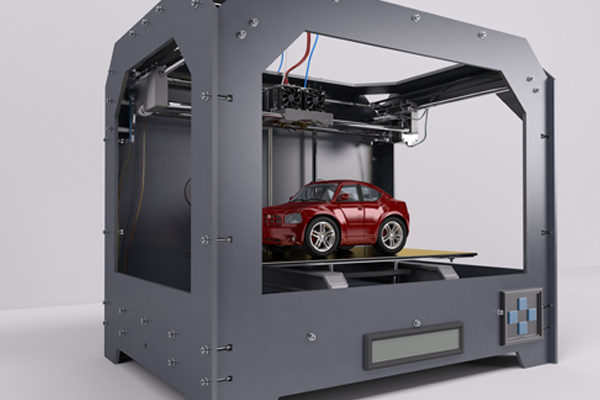Additive manufacturing (3D printing) - impact on design, faster production and use of new materials

3D printing technology looks likely to revolutionise manufacturing and move industries into a new age of efficiency.
A significant reduction in prices for 3D printers and materials has opened up the technology to many smaller businesses, when once only large corporations could afford the technology. Wohlers Report in 2014 predicted a rise from $3.07 billion in revenue from 2013 to $12.8 billion in 2018 (and according to their 2016 report hit over $5 billion in 2015).
A cost saving initiative
Initially touted for prototyping and design projects, advancements in technology are now allowing structurally secure items to be created by additive manufacturing -permitting companies to rely on 3D printing for much more than design and with the advantage of dramatic cost savings.
Paul Doe, chief designer at motorsport designers Prodrive, stated whilst speaking to Computer Weekly.com, “We’re able to build shapes that you can’t mould cast or forge – pieces you can’t make in any other way but through additive manufacturing. This allows us to avoid fixed costs and it means we don’t have to carry stock because we can manufacture parts on demand.” One car project in particular saw a cost saving of £80,000 thanks to 3D printing.
More specialised industries, above all, have benefitted from faster production. Where one off complicated parts may have previously been on lead times of weeks, or even months, they can now be produced in-house within a matter of hours.
Accuride’s use of 3D printing for product design
For Accuride’s design engineers 3D printing has made a huge difference to their approach to product development. The relatively low cost of getting prototype parts manufactured has allowed them to experiment more and test their ideas before settling on a final design. Arguably this has a positive effect on the end product and, of course, for the customer who benefits from the best possible solution.
Opening opportunities with new materials
New filaments are increasing the opportunities for additive manufacturing, with recent developments allowing even lower range 3D printers to produce metal models.
Metallic filaments containing plastic provide exciting capabilities to smaller companies. Brass and copper versions are readily available with the future possibility to produce commercially available nickel, ceramic and even glass models from 3D printing.
Recently 3M filed a patent for a new type of 3D printing technology that could lead to the manufacturing of fluorocarbon-based plastics, also known as fluoropolymers, which are used in everything from aerospace and defence applications to non-stick cooking surfaces.
The future of manufacturing
Low volume manufacturing has already embraced additive manufacturing, with it yet to break the seriously high volumes and regular manufacturing markets. Where companies are reaping the rewards is in the building of subassemblies, tools or jigs to reduce costs and long lead times.
However, some cutting edge firms are embracing 3D printing and new technology, with construction firms using additive manufacturing to produce modular construction components and even drones for site inspection and monitoring. Size had previously been a limiting factor, but now Stratasys has unveiled a machine that prints on a vertical plane enabling practically unlimited part size in the build direction, the company claims.
Worldwide, companies and factories are pushing the additive manufacturing industry to the next level. Sheffield University’s Factory 2050 was built with the key objective of developing high value manufacturing production over short run cycles with limited downtime.
2050 and similar factories are also benefitting from new standards supporting and allowing growth within the industry; most recently ASTM International describing chemical and mechanical requirements for 3D printing of stainless steel alloys.
It is interesting to note how major OEMs, especially those in the automotive market, are taking the lead in experimenting and investing in this technology.
3D printing start-up Carbon has brought in GE, BMW and Nikon as strategic investors and BMW has already produced some 10,000 parts with Carbon’s machines so far, mainly for its Minis in Germany.
Peugeot has announced a partnership with Divergent 3D, a U.S. company that last year showed off a supercar built of 3D printed structural components. The French car maker said it would start by using Divergent’s technology to make prototypes and then later explore on how to extend the same into mainstream production.
Honda has used a 3D printer to manufacture the outer panels for its ‘MC-Β’ compact electric vehicle (EV) and Ford has said that one of the immediate applications it is exploring is tooling.
With forward-thinkers leading an industry where the sky is the limit, does additive manufacturing have the ability to replace manufacturing as we know it? At the moment this seems improbable due to the length of time each part takes to print. But with the speed of advancements in this technology we can’t discount its potential impact.
Additional material from Nikkei Technolog, EPPM, Financial Times
Photo credit:Designed by Freepik
